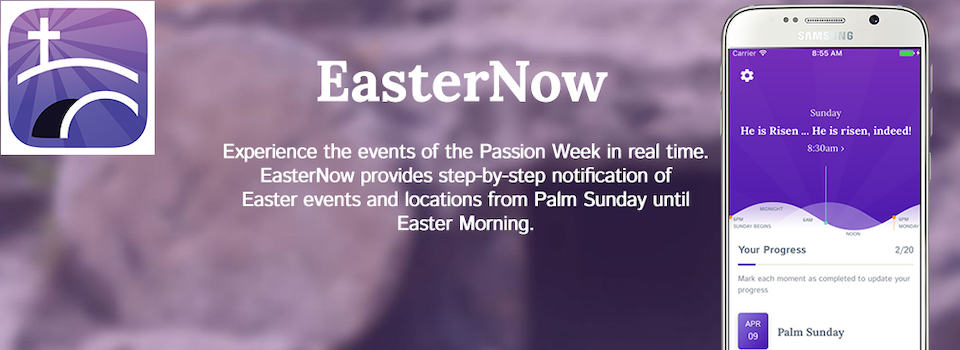I recently had the pleasure to interview Tom Harper, CEO of Networld Media Group and publisher of BiblicalLeadership.com.
Tom recently released Through Colored Glasses: How Great Leaders Reveal Reality which addresses a leadership challenge identified in Proverbs 16:2—All a person’s ways seem pure to them, but motivations are weighed by the Lord. The book is a fable about Leo Perkins, a man who desires to save his company but deep down he’s more worried about bruising his ego.
I was able to ask Tom about Through Colored Glasses, Biblical truth, and how you can become a better leader. Today, I get to share Tom’s thoughts with you and they’re good!
Through Colored Glasses isn’t a traditional business book. Instead of presenting your information in the standard non-fiction format, you presented business truths in a fiction format via a fable. Why did you choose to write Through Colored Glasses as a fable?
I think fiction is an underutilized tool in today’s leadership literature. There are many great how-to nonfiction books with practical keys, steps and tips, but most of them lack an emotional aspect.
We learn more effectively when our whole brains are engaged. When we leave out the emotional side, learning can become rote and short-lived. We gather facts, but we don’t connect them to anything deeper in our psyches. So we forget.
Other ways to mentally cement what we learn are teaching and doing. When we teach, we’re forced to intimately know our subject matter. Acting on what we learn adds experience to the lesson, reinforcing it.
I believe stories can cut through established thought processes more effectively than simple exposure to facts can. A story is an experience. And if that experience is crafted to teach a lesson, how much more powerful the learning!
Can you tell readers what they can expect to find in Through Colored Glasses?
First, it’s a short book. You could probably read it on a plane trip. Also, I’ve tried to fashion it into a fast-moving, conflict-ridden drama depicting the internal dialogues and struggles of the main characters.
As their competing desires, ambitions, and fears collide, you get a behind-the-scenes view of why these people act in such self-serving ways.
The main concept of the book is that we all operate with a certain set of biases and filters that compel us to see everything through our own colored glasses. Most of us don’t wear rose-colored ones—we’ve got a color unique to us.
By the end of the book, I hope readers get a greater understanding of the colored glasses concept. I also introduce biblical principles that can help them lead better in spite of it.
Leo Perkins is the CEO the story is about. Early on it is mentioned Leo is blind to anyone’s view but his own, and readers will see a change in him toward the end of the book. Why did you choose for him to go through the changes he experiences?
Leo has a lot of responsibility as the chief executive. Hundreds of people rely on him to run the company profitably. He takes his position very seriously. But as the story progresses, challenges mount for him. The company is at risk. His job is on the line. People start acting irrationally.
Leo’s journey leads him on a path many of us experience. He goes from being confident, to overwhelmed, to unsure of what to do. He’s so caught up in his problems he can’t see beyond them.
Many—if not most—leaders experience this confidence/confusion cycle many times throughout their careers. I think readers will relate to Leo’s predicament, and as they live inside his head for a bit, they’ll be encouraged to see how things can change for the better.
One of the characters in the book, Linda Durbin, spoke boldly to Leo. She told him the truth he needed to hear. How can leaders be open and ready to receive similar words of wisdom from their team members?
First, we have to seek out the truth-tellers. There’s a distinction, however, between these folks and people that are just blunt.
When you find a compassionate person who’s not afraid to deliver truth—even if you don’t want to hear it at the moment—you’ve found a rare treasure.
I’ve learned to simply thank these people for their input, and not to react too quickly to it. Often, their advice will roll around in my head for a day or two, and then suddenly I’ll have the clarity I’ve been searching for. This is what Leo does with Linda’s advice.
You mentioned two types of people: Truth-tellers and people that are blunt. How can you find more truth-tellers and less people who are blunt? How can you tell the difference between the two?
I believe we find them simply by looking around us. The colleagues we regularly work with usually include both kinds of people.
Here are some questions to ask as you examine the people you see every day: Who do I trust? Who is loyal to me? Who has helped me? Who has respectfully differed with me?
By focusing on these positive-leaning questions, and making a shortlist of names, we automatically weed out the “unfriendlies” that are blunt just to be blunt—the people who don’t engender loyalty and trust.
If they pass the litmus test of trust, loyalty, and helpfulness, that is a person to keep close. They’ll make sure you stay straight. And we all need kind course correction, don’t we?
Linda also shared biblical truth with Leo. In the business world, do you have any tips or strategies on how leaders can share their faith with their employees without crossing boundaries?
This is a common question among Christian leaders. I do believe we have a responsibility to share our faith, and that God gives us leadership roles not just because we earn or deserve them.
One of the reasons he puts us in positions of authority is because people will watch and listen to us. If we speak, act and make decisions according to biblical principles, we will naturally find opportunities to talk about spiritual things with people—even in a strictly secular work environment.
The law protects witnessing in the workplace, as long as we don’t pressure people into thinking they’ll get more favor from the boss if they believe what he believes. I’d highly recommend more research in this area for any interested leader.
I really enjoyed the afterword of Through Colored Glasses. The afterword feels like a breaking down of what the book was about. The areas you touched on were: Getting to the heart; Striking deep; Developing discernment; Sin-stained glasses
Can you share how each of these areas impacts a leader’s life?
Sure, here are the basic concepts:
Getting to the heart—Only the Lord really knows the heart of a person. We think we know what’s going on inside somebody, but as the disciples admitted in Acts 1:24, “Lord, you know everyone’s heart” (my emphasis). They pleaded for his help to choose a new disciple to replace Judas.
Striking deep—We all put up walls to defend and justify our thoughts and actions. But Hebrews 4:12 tells us that Scripture “judges the thoughts and attitudes of the heart.” God’s Word breaks through our barriers and burrows deep into our hearts, helping us see the truth.
Developing discernment—The more we read and employ the Bible for everyday leadership, the closer we get to the Holy Spirit. Through this relationship, he often unveils small parts of people’s hearts to us. This is one way we develop spiritual wisdom.
Sin-stained glasses—The common battle we all fight, regardless of our level of maturity and experience, is against sin. It clouds and confuses leaders. It makes people do crazy things. We must learn to recognize it and focus on the saving truth of Jesus Christ in our struggle against it.
Can you share some tips you’ve used to fight this common battle? How are you winning in your faith walk?
Personally, I fight pride in its various forms. I believe we all struggle with this sin, but we tend to concoct our own versions of it.
What I mean is this. Since my personality tips the scale toward introversion, I don’t seek approval from large groups of people that I’m speaking to or leading—it can actually be quite embarrassing for me. They might even perceive me as humble. But secretly, within my shell, I crave their recognition.
So, as I walk this out with the Lord, I have learned to step outside myself and observe what I’m saying and doing, as well as what’s going on inside my heart. Sometimes I don’t like what I see. But as I hear myself speak, watch how I act, or examine my thoughts, I can try to correct the problem.
But sin, of course, is ultimately more powerful than our wills. I’m well aware of this. So, if I feel myself trending toward my signature sin, I sometimes recall a pithy verse from Proverbs or simply ask the Holy Spirit to deliver me from it. This has saved me from myself many times!
Is there anything else you’d like to share with those reading today?
I can’t emphasize enough the power of God’s Word for leaders. Reading it regularly will have a far-reaching impact—not only on our everyday work, but on our relationships, job satisfaction, and leadership development.
Ultimately, the Bible is a true story, written by the Lord himself. It’s about how he sent his Son to defeat sin and death while teaching us how to live lives of significance as we lead others toward the Truth.











